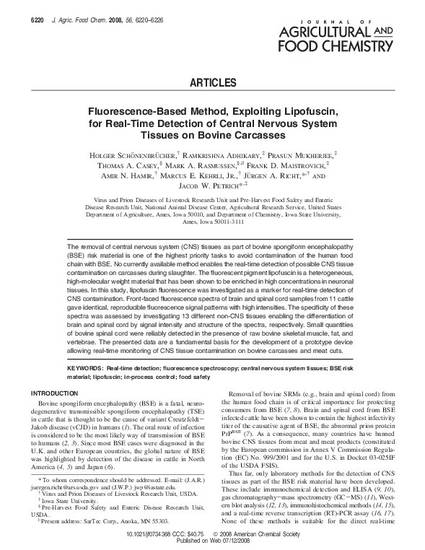
The removal of central nervous system (CNS) tissues as part of bovine spongiform encephalopathy (BSE) risk material is one of the highest priority tasks to avoid contamination of the human food chain with BSE. No currently available method enables the real-time detection of possible CNS tissue contamination on carcasses during slaughter. The fluorescent pigment lipofuscin is a heterogeneous, high-molecular weight material that has been shown to be enriched in high concentrations in neuronal tissues. In this study, lipofuscin fluorescence was investigated as a marker for real-time detection of CNS contamination. Front-faced fluorescence spectra of brain and spinal cord samples from 11 cattle gave identical, reproducible fluorescence signal patterns with high intensities. The specificity of these spectra was assessed by investigating 13 different non-CNS tissues enabling the differentiation of brain and spinal cord by signal intensity and structure of the spectra, respectively. Small quantities of bovine spinal cord were reliably detected in the presence of raw bovine skeletal muscle, fat, and vertebrae. The presented data are a fundamental basis for the development of a prototype device allowing real-time monitoring of CNS tissue contamination on bovine carcasses and meat cuts.
Available at: http://works.bepress.com/jacob_petrich/41/

Reprinted (adapted) with permission from Journal of Agricultural and Food Chemistry 56 (2008): 6220, doi: 10.1021/jf0734368. Copyright 2008 American Chemical Society.